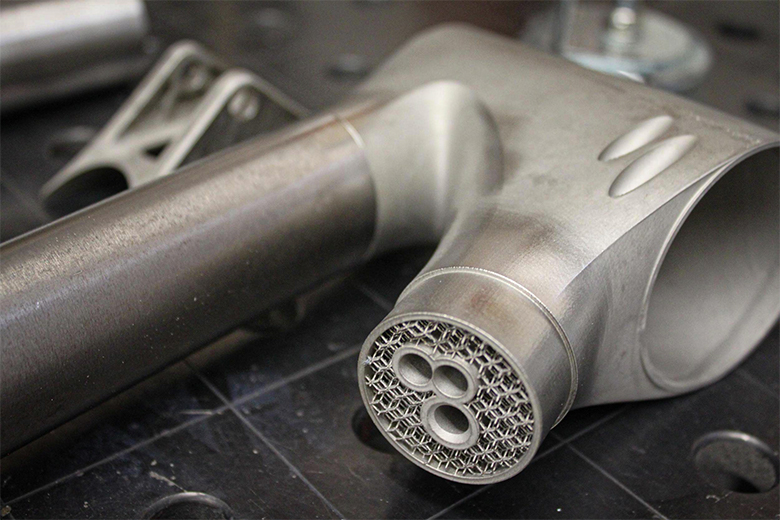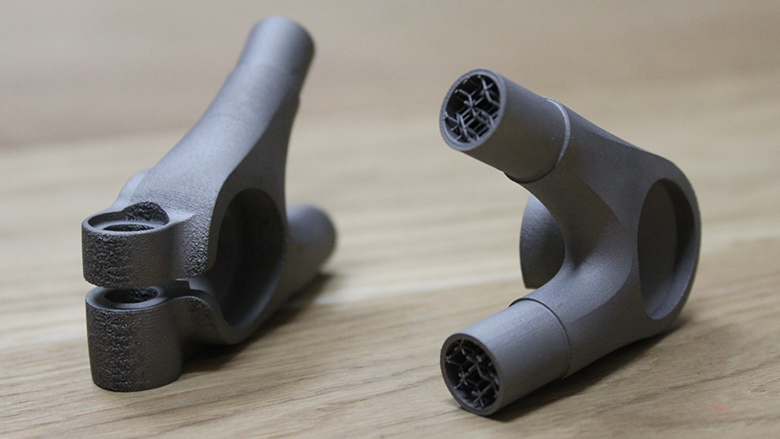Part-time bicycle frame maker Ralf Holleis calls it “sexy”. The judges in the eighth annual Purmundus Challenge competition for outstanding achievement in 3D printing called it “very desirable”.
Whatever your view of bicycle frames, Holleis’ “Moorhund” frame represents a turning point in custom cycle manufacturing.

Solving the Frame Weight Problem with 3D Printing
First off, Holleis abandoned carbon fiber, the go-to material for super light weight yet study high-performance mountain bike frames. Turns out that carbon fiber is difficult, if not impossible to recycle or repair, and has a lifespan of just a few years.
“Mountain biking is as close as you can get to nature and riding trails on a plastic frame does not feel right, therefore it has to be steel or titanium,” says Holleis.
The challenge was to make the metal lightweight. For this, Holleis turned to 3D printing a lattice internal structure inside the lugs connecting the light-weight titanium tubes. The internal lattice structure enables the lugs to have very thin walls yet remain extremely stiff.
3D printing also made it possible to construct a frame with functions, such as cable guiding, seat clamps, bearing housings, and additional material for welding, integrated into the design.
Overall, the frame is environmentally friendly because it can be repaired as well as recycled. The titanium frame does not need paint so even the finishing process involves no environmentally harmful chemicals.
The Purmundus competition jury said the frame was a great example of an innovative use of additive manufacturing “for the right reasons.” Plus, the jury noted, Holleis used 3D printing along with welding in an efficient and elegant combination of technologies.
An industrial designer by training, Holleis has a day job developing prams and children’s furniture for the German company Cybex. Perhaps that’s the inspiration behind the playful name of his company Huhn Cycles (chicken cycles). “Chickens have the skill to fly for short distances, mountain bikes do the same,” he says.

Holleis plans to build 12 frames a year at a little more than $5,000 each.
Read more about the Purmundus Challenge including the other winners.
Lead image source: (Source: Huhn Cycles)
License: The text of "3D Printed Bicycle Frame Wins 3D Printing Competition" by All3DP Pro is licensed under a Creative Commons Attribution 4.0 International License.